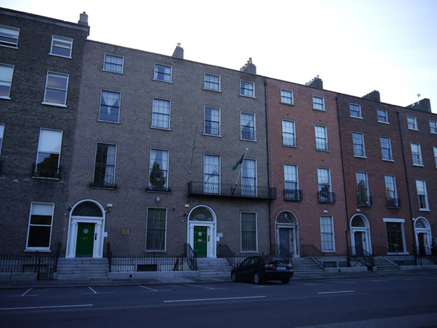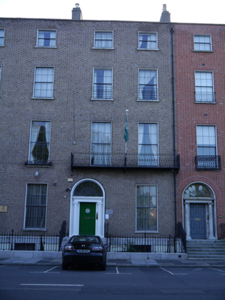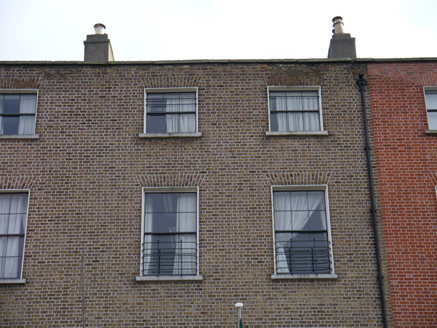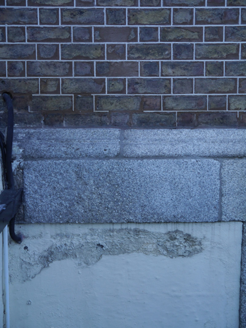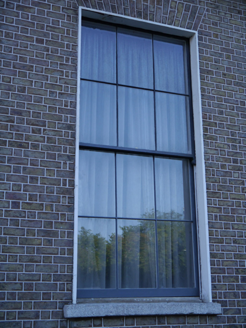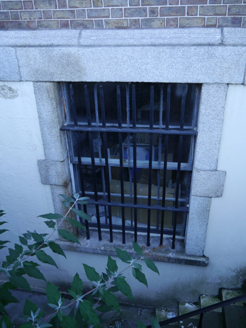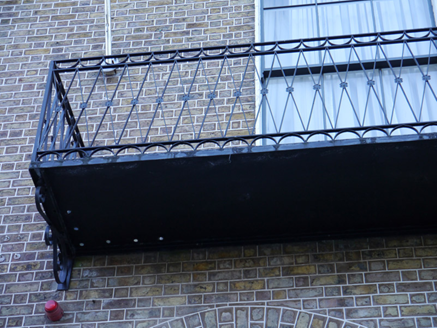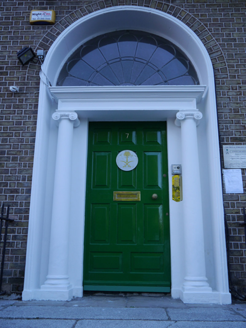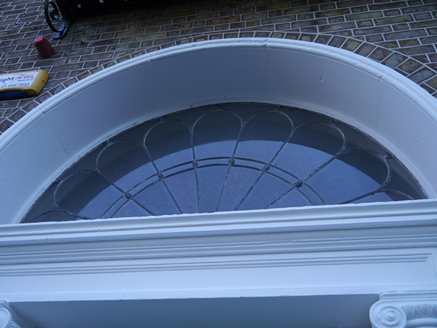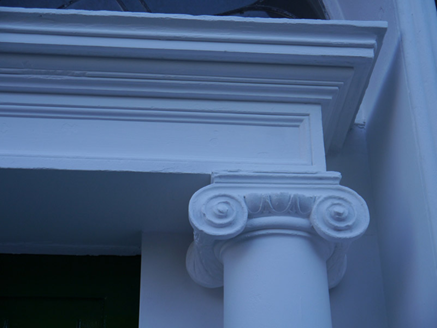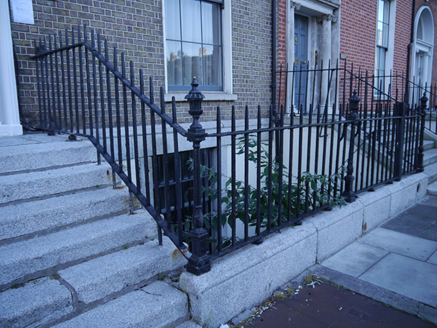Survey Data
Reg No
50930118
Rating
Regional
Categories of Special Interest
Architectural, Artistic
Original Use
House
In Use As
Embassy
Date
1815 - 1825
Coordinates
316590, 233041
Date Recorded
24/09/2015
Date Updated
--/--/--
Description
Attached two-bay four-storey over basement former townhouse, built c. 1820, as a pair with adjoining building to north (50930117). Two-stage return to rear (east). Now in use as an embassy. Pitched roof to west span, irregular M-profiled hipped roof to east, concealed by brick parapet with granite coping. Pair of rendered chimneystacks to party walls with lipped yellow clay pots. Parapet gutters with cast-iron hopper and downpipe to south side. Tuck pointed buff brick walling laid in Flemish bond over tooled ashlar limestone walling to basement beneath granite plinth course. Square-headed window openings with brick voussoirs, patent reveals and granite sills, with granite surrounds to basement opening. Iron guard-rails to second and third floor openings, continuous decorative cast-iron balconette to first floor and cast-iron grille to basement opening. Largely six-over-six timber sliding sash windows with ogee horns, three-over-three to third floor and eight-over-eight to basement without horns. Round-headed door opening with brick voussoirs, moulded reveals and recessed painted rendered surround containing a prostyle portico with panelled frieze and moulded cornice carried on Ionic columns over plinth stops, petal iron fanlight and raised-and-field timber panelled door with replacement brass furniture. Granite entrance platform approached by seven granite steps flanked by iron railings with decorative cast-iron corner posts on granite plinth, enclosing basement to south-side. Coal-hole cover to pavement. Street fronted on Fitzwilliam Square East. Recent blockwork wall to eastern boundary on Lad Lane with square-headed pedestrian opening and shared vehicular opening both with steel gates.
Appraisal
Built by the carpenter and builder Richard Knight as his own residence and a pair with No. 6 (50930117), the buff brick façade breaks the red brick which dominates much of the Square. According to Casey (2005) it retains a stucco eagle centrepiece in the entrance hall, one of five houses, Nos. 10,41, 60 and 68, with this detail. Laid out in 1791 by the surveyors J & P Roe, Fitzwilliam Square was the last of the city’s Georgian squares to be completed. Development was staggered, progressing slowly until after the Napoleonic Wars, with the vast majority of houses on the eastern side of the square completed between 1816-22. Although largely homogeneous in character and form, the subtle variations between terraces are indicative of the speculative nature of the Square’s development.
